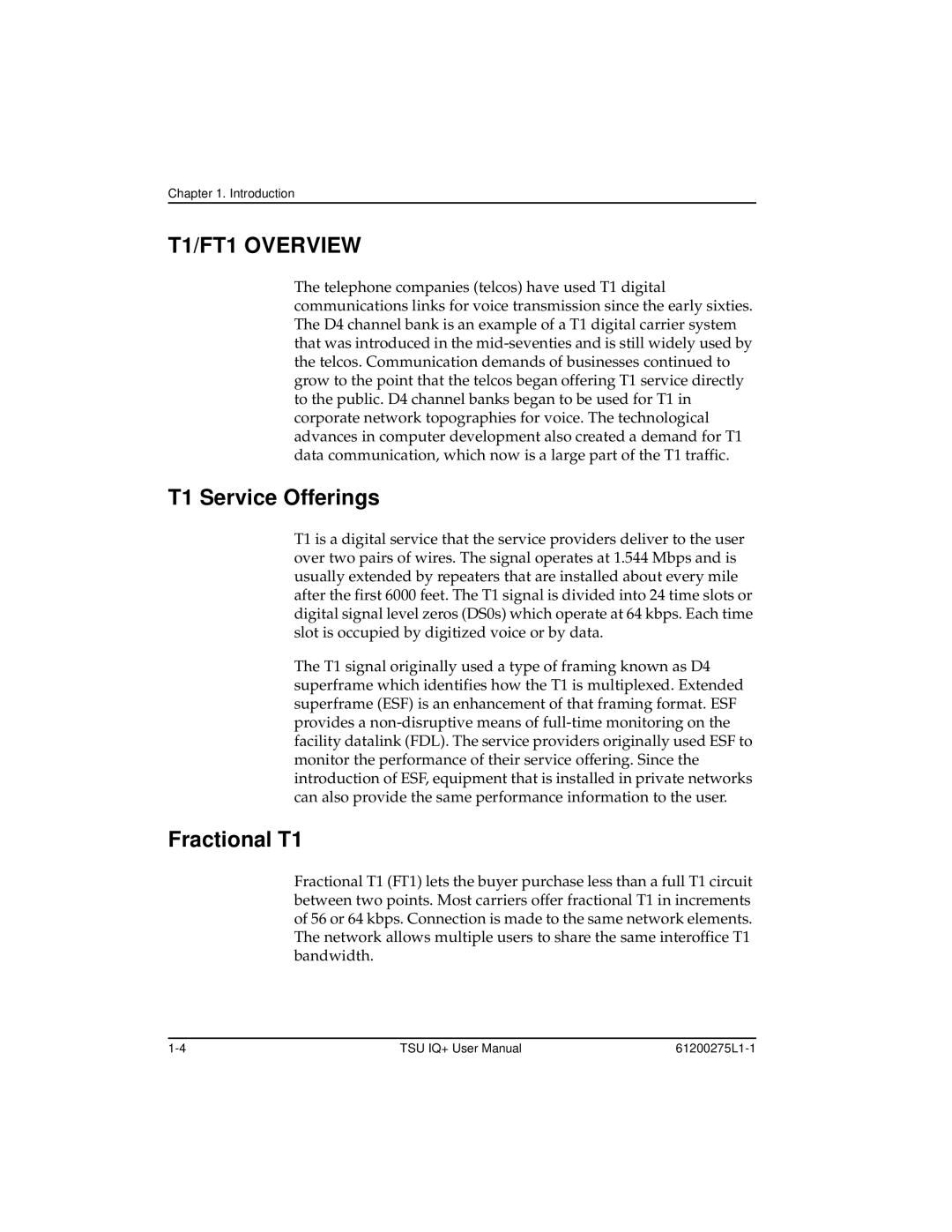
Chapter 1. Introduction
T1/FT1 OVERVIEW
The telephone companies (telcos) have used T1 digital communications links for voice transmission since the early sixties. The D4 channel bank is an example of a T1 digital carrier system that was introduced in the
T1 Service Offerings
T1 is a digital service that the service providers deliver to the user over two pairs of wires. The signal operates at 1.544 Mbps and is usually extended by repeaters that are installed about every mile after the first 6000 feet. The T1 signal is divided into 24 time slots or digital signal level zeros (DS0s) which operate at 64 kbps. Each time slot is occupied by digitized voice or by data.
The T1 signal originally used a type of framing known as D4 superframe which identifies how the T1 is multiplexed. Extended superframe (ESF) is an enhancement of that framing format. ESF provides a
Fractional T1
Fractional T1 (FT1) lets the buyer purchase less than a full T1 circuit between two points. Most carriers offer fractional T1 in increments of 56 or 64 kbps. Connection is made to the same network elements. The network allows multiple users to share the same interoffice T1 bandwidth.
TSU IQ+ User Manual |
|
